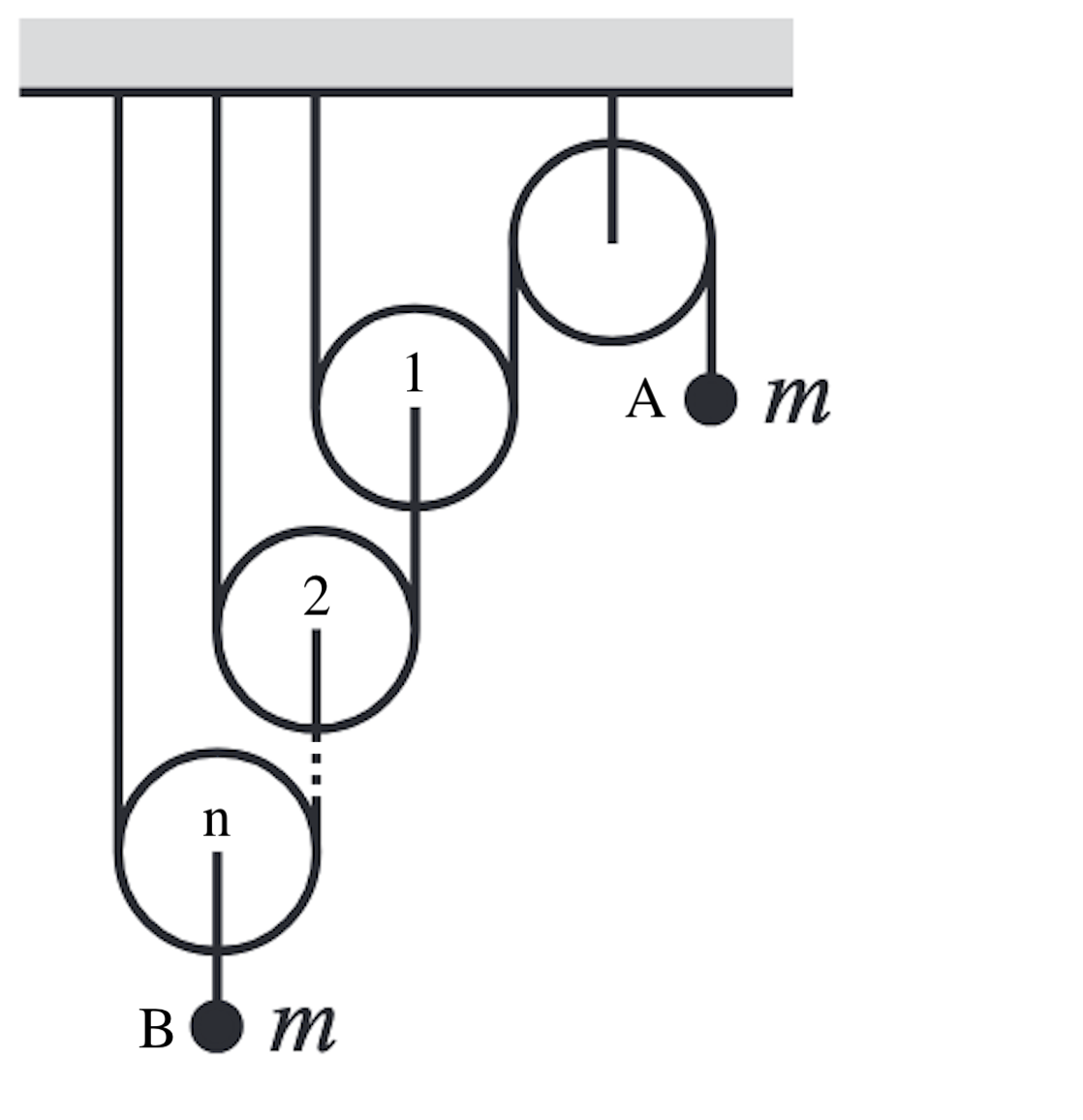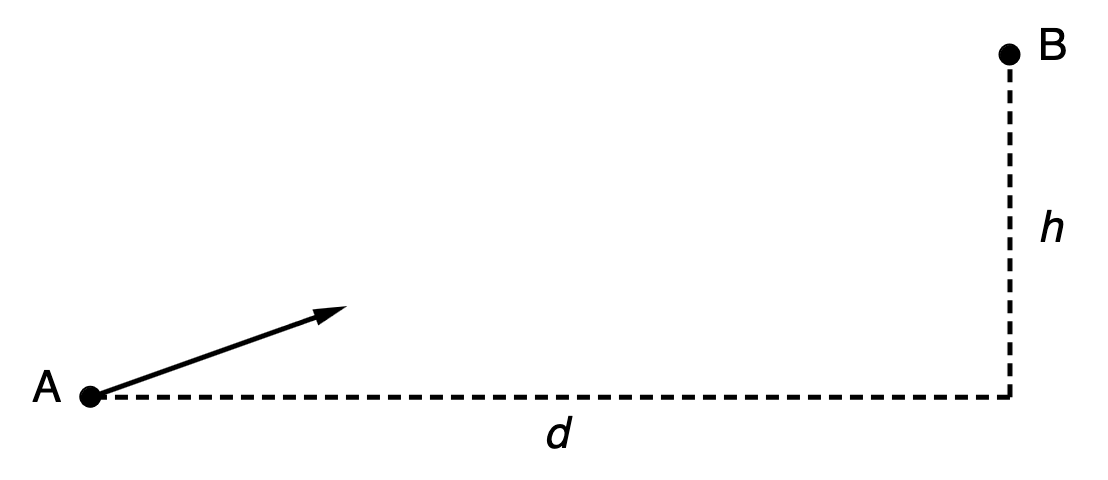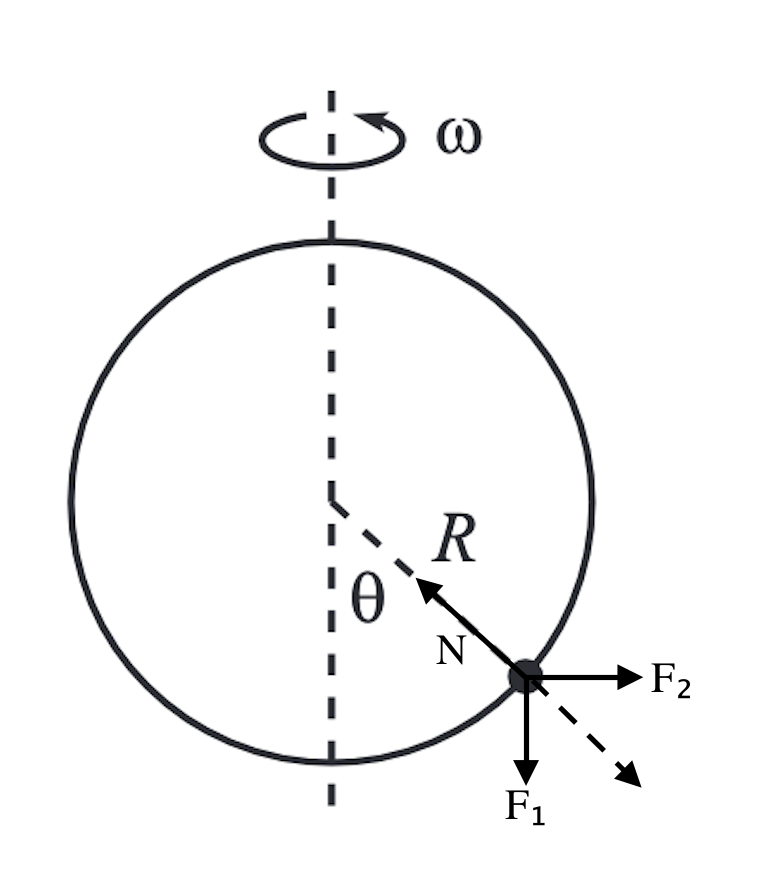3.30

Let have acceleration and tension acting upward. Then, from the conservation of string, pulley 1 must have upward acceleration of , pulley 2 , and pulley (and hence ) . Similarly, if experiences an upward tension of , pulley 1 must experience a total upward tension of , pulley 2 , and pulley (and hence ) .
We can now proceed to write the second law equations for both the blocks.
Solving these equations for , we get
3.44

Suppose Newton is at , and he aims his rock at an apple located at with a velocity . Let denote the position of the rock, and denote the position of the apple. and can be parameterized in like so (let ):
Equating the coordinates, we get , the time at which the rock and apple will have the same coordinate. On plugging this value of into the expressions for and , we get
Thus, the rock hits the apple.
3.57

From the frame of reference of the hoop, the bead will experience a fictitious force , gravitational force , and normal force due to the hoop . For the bead to remain at the same angle relative to the vertical, the resultant of and must be antiparallel to . Thus,
When , . This implies that if , the bead will not be able to maintain any position on the hoop.
3.69
We know that and . Balancing forces in the radial and tangential directions, we get
The first equation tells us that is constant, and the second provides us with the differential equation we can use to solve for in terms of .
Let be , and be . It follows that .
Substituting the values of and in terms of , we get
for some constants and .
Let , for some initial angle . Now, the above equation can be rewritten as
for some constants and .